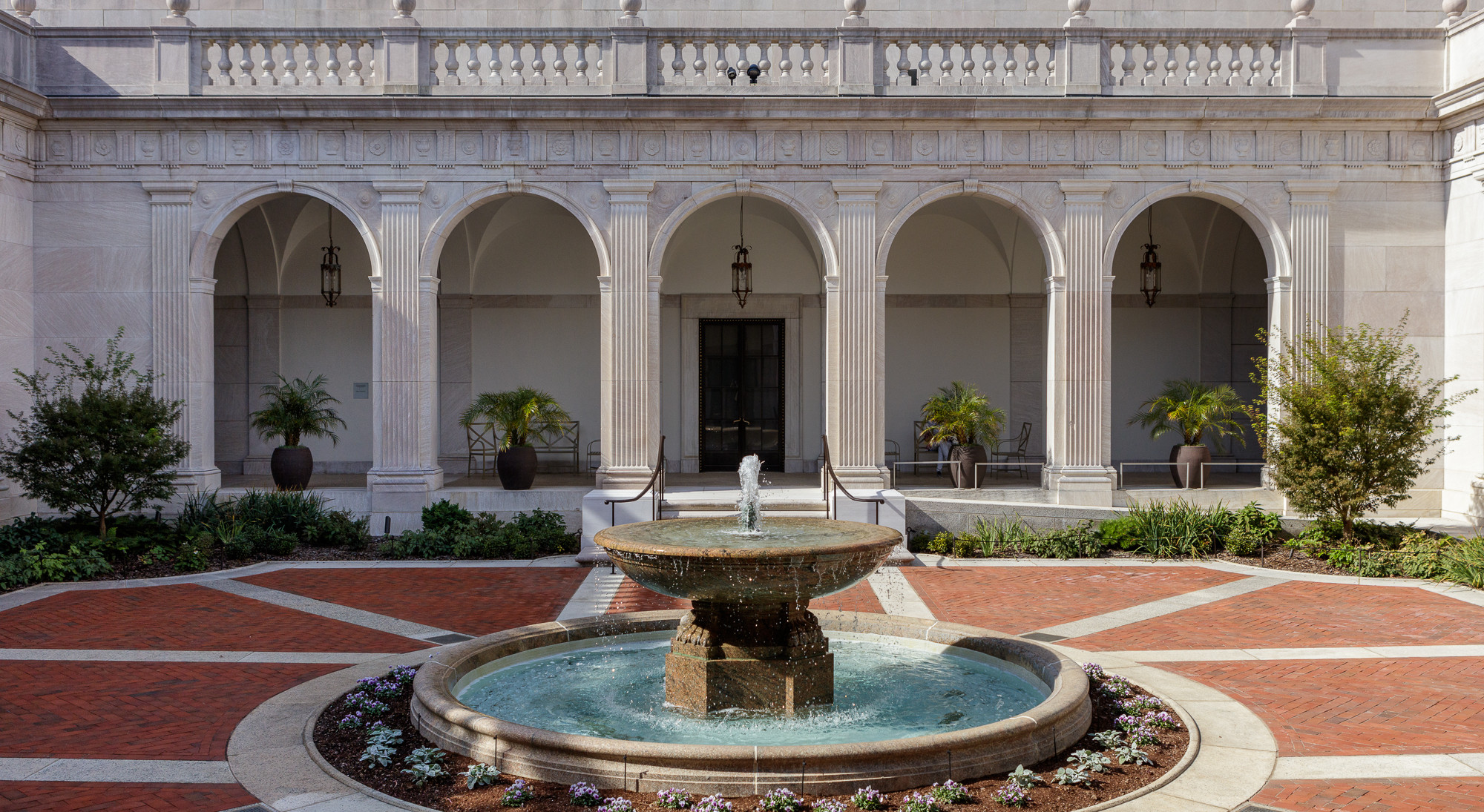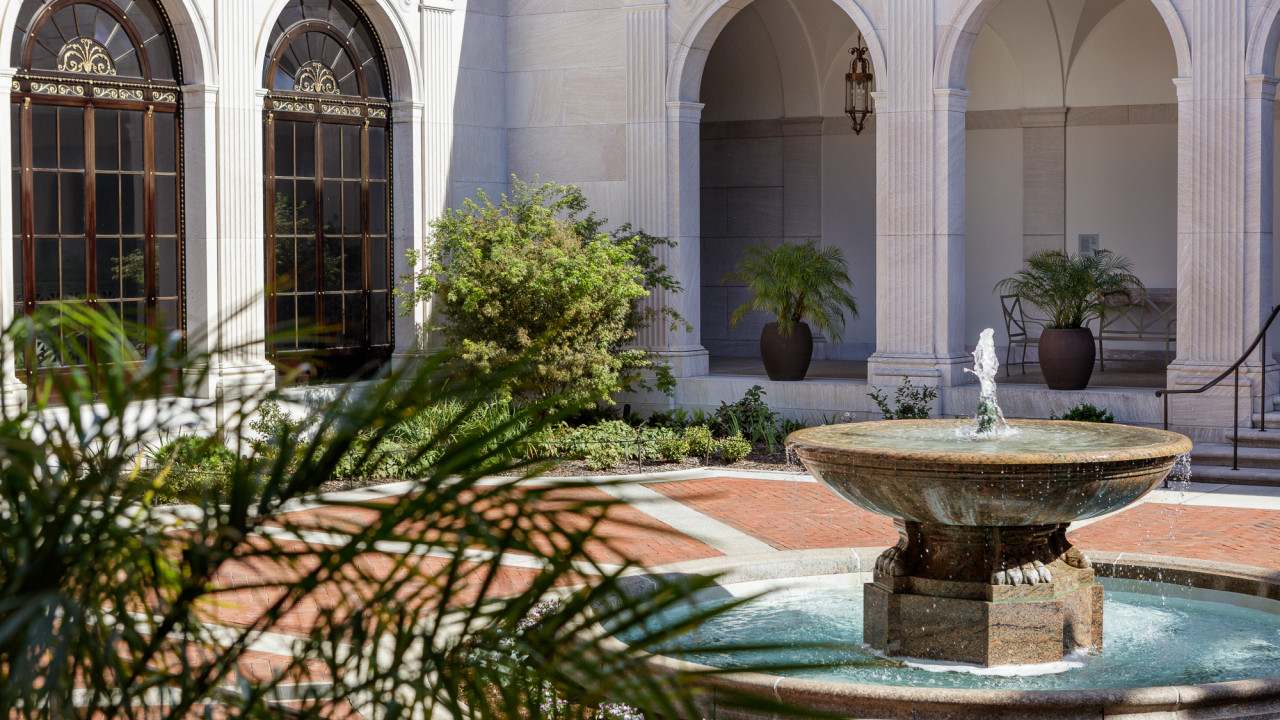
Freer Courtyard Garden at the National Museum of Asian Art
A lush, Italian Renaissance style courtyard.
The Freer Courtyard Garden is an elegantly designed outdoor space in the center of the National Museum of Asian Art. Lush vegetation and the courtyard fountain’s cascading water, combined with the symmetrical layout of the arches and walkways, create a tranquil space for reflection and rest. Layers of trees, bushes, and low plantings draw the visitor’s eye from the classical decorations of the roofline down to the central fountain. Boxwood hedges emphasize the ordered design of the brick and stonework, while Persian ironwood trees and Japanese maples filter shade from the afternoon sun. In winter, the bare branches of the trees cast calligraphic silhouettes, reminiscent of the Asian works of art on view in the surrounding galleries.
Garden History
In 1906, industrialist Charles L. Freer (1854–1919) donated his exceptional collection of Asian and American art to the Smithsonian Institution and the people of the United States. His personal friend, the acclaimed architect, landscape architect, and illustrator Charles A. Platt (1861–1933), designed an Italian Renaissance style museum and courtyard in 1918 to house Freer’s holdings of Asian art and the works of American expatriate artist James McNeill Whistler (1834–1903). Platt intended the courtyard garden to be a place for quiet introspection when the museum opened to the public in 1923.
The courtyard’s elegant design highlights both beauty and function. Since the museum was constructed in the days before central air conditioning and climate control, large glass doors located between the columns of the loggia, as well as windows behind the parapet, allowed air and light to enter the galleries. With advances in technology and growing concerns about preserving the objects on view, the courtyard was later closed off to prevent the fluctuations in humidity and temperature than can damage works of art. The plantings and fountain remain, however, and the courtyard continues to serve as a place of rest and reflection for today’s visitors.



